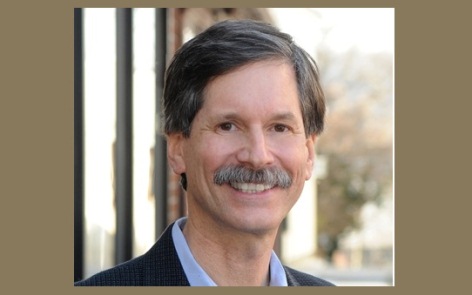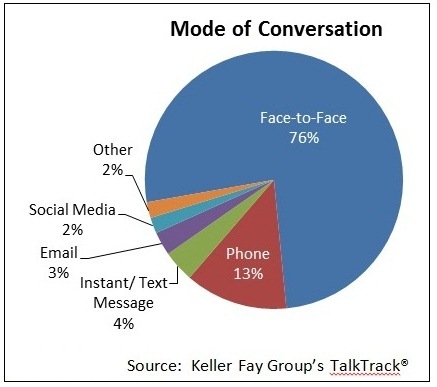Shining a Light on Dark and Super Dark Social - Ed Keller

"Dark Social: We Have the Whole History of the Web Wrong ." That's the provocative headline of Alexis Madrigal's fascinating story in the Atlantic.
The premise is that most marketing people assume that the social web equals Facebook, Twitter and other social networking sites. This assumption leads to the belief that companies wishing to maximize their social visibility are best served by optimizing the posting and sharing that goes on via these sites, and you will be optimizing your brand for social.
"Here's a pocket history of the web, according to many people," according to Madrigal. "In the early days the web was just pages of information linked to each other. Then along came web crawlers that helped you find what you wanted among all that information. Sometime around 2003 or maybe 2004, the social web really kicked into gear, and thereafter the web's users became to connect with each other more and more often. Hence Web 2.0, Wikipedia, MySpace, Facebook, Twitter, etc. I'm not strawmanning here. This is the dominant history of the web as seen, for example, in this Wikipedia entry on the "Social Web."
This capsule summary rings true with me, based on what I, too, hear from people. I am often asked by audiences to whom I speak, "Isn't the growing power of word of mouth the result of the growth of social media?"
The Atlanticarticle highlights what is wrong with this assumption. The majority of online social sharing, it reveals, is not via social networks, but rather person-to-person via email or instant messages. Sharing via social networking sites plays only a minority role. Here is the capsule summary of what the Atlantic reports:
1. "The sharing you see on sites like Facebook and Twitter is the tip of the 'social' iceberg. We are impressed by its scale because it's easy to measure.
2. "But most sharing is done via dark social means like email and IM that are difficult to measure.
3. "According to new data on many media sites, 69% of social referrals come from dark social. 20% come from Facebook.
4. "Facebook and Twitter do not shift the paradigm from private sharing to public sharing. They structure, archive and monetize your publications."
Dark social, concludes the Atlantic, "is not a niche phenomenon!"
These findings are highly consistent with the data that my firm has been collecting for a number of years now. According to our research, when it comes to online word of mouth about brands, IM or texting accounts for the greatest share -- about half of all such conversations. Email and social media sites are about tied at half that level. Taken together, then, IM/Texting and Email account for more than three quarters of all online brand conversation while social media accounts for a quarter.
But in fact, the size and scope of so-called Dark Social is actually far bigger than the Atlantic says. The biggest missing factor is the social sharing that takes place offline, in the real world – primarily face to face and also via the phone. While some like to think about this as "good old fashioned word of mouth," it is not a relic of a bygone era. Rather, it remains very contemporary. Just as astronomers estimate "dark matter" as representing almost 90% of all matter in the universe, offline word of mouth accounts for 90% of all brand-related word of mouth. Perhaps we should call it "Super Dark" in contrast to that the somewhat more visible email and IM sharing.
Looked at in light of this offline sharing and well as the harder to measure online sharing via email and IM, the social media component is only about 2% of the total.

The Atlantic's Madrigal concludes her piece by observing "I think there are some philosophical changes that we should consider in light of this new data. While it's true that sharing came to the web's technical infrastructure in the 2000s, the behaviors that we're now all familiar with on the large social networks was (sic) present long before they existed, and persists despite Facebook's eight years on the web."
It is relatively easy to measure sharing that takes place via online social networks. It is harder to measure what takes place via "dark social," whether online or offline. But just because it's difficult to measure doesn't mean it's not real, nor that marketers should ignore it. The imperative for those brand that truly want to be a social brand to seek out ways to shine a light on the social sharing that takes place in all its manifestations.
Ed Keller, CEO of the Keller Fay Group, has been called "one of the most recognized names in word of mouth." His new book, The Face-to-Face Book: Why Real Relationships Rule in a Digital Marketplace, was recently published by Free Press/Simon & Schuster. You can follow Ed Keller on Twitter, Facebook and Google+, or contact him directly at ekeller@kellerfay.com.
Read all Ed’s MediaBizBloggers commentaries at WOM Matters.
Check us out on Facebook at MediaBizBloggers.com
Follow our Twitter updates @MediaBizBlogger
The opinions and points of view expressed in this commentary are exclusively the views of the author and do not necessarily represent the views of MediaBizBloggers.com management or associated bloggers. MediaBizBloggers is an open thought leadership platform and readers may share their comments and opinions in response to all commentaries.


